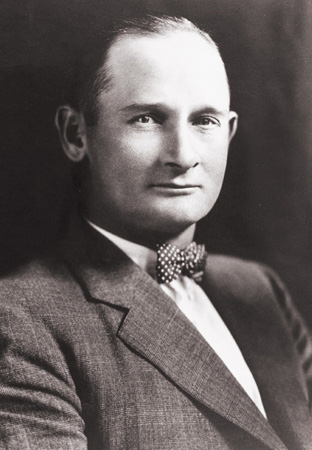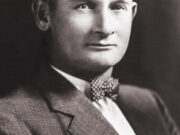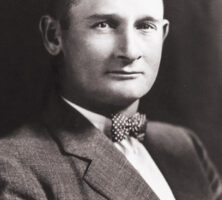Although he was not the greatest professional baseball player ever to come from Georgia, the early-twentieth-century pitcher Sherrod “Sherry” Smith more than held his own in what many baseball aficionados consider the sport’s first era of superstars, which included Babe Ruth, Grover Cleveland Alexander, and Tris Speaker.

Courtesy of Georgia Sports Hall of Fame.
Sherrod Malone Smith was born in Monticello to Zipora Permelia and Henry Smith on February 18, 1891. He went on to play fourteen years in the major leagues for the Pittsburgh Pirates (1911-12), the Brooklyn Robins (later Brooklyn Dodgers) (1915-17, 1919-22), and the Cleveland Indians (1922-27). He compiled a pitching record of 114 wins and 118 losses, with a lifetime earned run average (ERA) of 3.32. Prior to the start of his major league career, the 6-foot-1-inch left-hander played on semiprofessional teams in such Georgia towns as Elberton, Madison, Mansfield, and Newborn.
Despite his sub-.500 mound record, Smith’s place in baseball history was cast through his play in the 1916 and 1920 World Series. In the 1916 series Smith, pitching for the Brooklyn Robins (named after manager Wilbert Robinson), faced Babe Ruth in the second game, with both pitchers going a phenomenal fourteen innings before Ruth’s team, the Boston Red Sox, won two to one en route to winning the Fall Classic.
In 1920 Smith pitched in two World Series games, defeating the Cleveland Indians in game three by a two-to-one score and then four days later losing one to zero in game six. In his thirty innings of World Series pitching, Smith posted an ERA of 0.89, the fifth-best in major league history, ahead of such luminaries as Sandy Koufax (0.95) and Christy Mathewson (0.97).
Smith’s greatest big-league season came in 1915 during his first full year in the major leagues, with Brooklyn. That season he compiled a fourteen-and-eight record with a 2.59 ERA. In the World Series season of 1916, Smith was fourteen and ten with a 2.34 ERA as the Robins went ninety-four and sixty; in 1920 Smith was eleven and nine with a career-best ERA of 1.85 as the Robins recorded a ninety-three-and-sixty-one record.
At the age of thirty-three, Smith was the workhorse of the 1924 Cleveland Indians staff, going twelve and fourteen with twenty-seven starts, twenty complete games (the translation being he completed more games than he won, unheard of in modern-day baseball), 247.2 innings pitched, and 1,050 batters faced. A sportswriter during the era characterized Smith as “strong as a horse and tireless as a Missouri mule.”
Smith was also an excellent defensive pitcher, completing the 1923 and 1926 seasons without committing an error. In 1927, his last season, Smith compiled a one-and-four record with a 5.45 ERA.
Smith also served in the U.S. Army during World War I (1917-18) and was sent to France. He ended his baseball career in 1932 as the coach of the Macon Peaches in the Southeastern League. Later, he became police chief in the Georgia towns of Porterdale and Madison. Smith died on September 12, 1949, at the age of fifty-eight, in Reidsville. He and his wife, Addilu, are both buried in Mansfield, in Newton County.
In 1980 Smith was inducted into the Georgia Sports Hall of Fame. In 1994 he was honored with a state historical marker (“Mansfield’s Famous Southpaw”) on Georgia Highway 11 south in Mansfield.





